Compliance audits are critical evaluations that ensure organizations adhere to regulatory standards, industry frameworks, and internal policies. Passing these audits is not just about avoiding penalties—it’s about building trust, mitigating risks, and fostering operational excellence. This guide synthesizes best practices from leading compliance experts to help you navigate the audit process successfully.
Understanding the Audit Scope and Objectives
Every audit begins with a clear understanding of its scope. This involves identifying which departments, systems, and processes will be examined. For example, an IT audit might focus on data security controls, while a financial audit could prioritize transaction accuracy. Collaborate with stakeholders to clarify objectives, review prior audit findings, and align on relevant regulatory frameworks. If your organization has been audited before, revisit previous remediation efforts to ensure all gaps have been fully addressed.
Building a Cross-Functional Compliance Team
No single department can prepare for a compliance audit in isolation. A successful audit requires broad collaboration across functions. Assemble a team that includes compliance officers, legal counsel, IT experts, and relevant operational leads. For more complex audits—such as HIPAA, SOC 2, or ISO 27001—include subject-matter experts who understand the nuances of each standard.
A project lead should be appointed to:
- Coordinate communication and scheduling,
- Track progress across departments,
- Serve as the primary contact for auditors.
This central coordination ensures consistent messaging and efficient evidence gathering.
Assessing Regulatory and Framework Requirements
Each compliance framework comes with distinct rules and expectations. Start by cataloging all applicable regulations, and actively monitor for updates. Whether you’re preparing for ISO 27001, HIPAA, or SOC 2, it’s essential to map specific control requirements to your current processes.
For instance:
- HIPAA’s Privacy Rule mandates safeguards for protected health information (PHI).
- ISO 27001 emphasizes risk assessment and continuous improvement.
- SOC 2 focuses on trust service criteria like availability, confidentiality, and security.
Using compliance automation software can streamline this mapping and keep your organization aligned with evolving standards.
Conducting Risk Assessments and Gap Analyses
Before the auditors arrive, it’s important to know where your vulnerabilities lie. Conduct a formal risk assessment to identify weaknesses in your compliance posture, then compare existing controls to required standards through a gap analysis. This step is vital for highlighting areas that need remediation.
For example:
- A healthcare provider might uncover gaps in how patient data is encrypted.
- A fintech company may realize its fraud detection processes are insufficiently documented.
Tools like Drata or Vanta can help automate this analysis, but human oversight is crucial when prioritizing which risks to address first.
Updating Policies and Controls
Audit readiness depends on having current, well-documented policies that reflect both regulatory standards and internal operations. Review your organization’s key controls—such as access management, data retention, and incident response—to ensure they meet required criteria. If gaps exist, implement updated procedures and controls.
Some commonly updated areas include:
- Enforcing multi-factor authentication for sensitive systems,
- Encrypting data at rest and in transit,
- Establishing clear asset and vendor management protocols.
Make sure all changes are thoroughly documented, approved, and communicated across teams.
Training Employees and Cultivating a Compliance Culture
Technology and controls are important, but people remain a critical factor in compliance success. Regular employee training on topics like data handling, phishing threats, and regulatory updates reduces risk and demonstrates your organization’s commitment to accountability.
To embed compliance into company culture:
- Offer role-specific training sessions,
- Encourage employees to report issues without fear,
- Have leadership model strong ethical behavior.
According to Ethisphere, organizations with a strong compliance culture see 63% fewer violations—proof that awareness makes a measurable impact.
Organizing Documentation and Evidence
Auditors expect timely access to clear, organized documentation. Store audit-related records in a centralized, secure repository and use version control to track policy changes and maintain audit trails. This preparation reduces friction during the audit and increases your credibility.
Key documents to prepare include:
- Risk assessments and mitigation plans,
- Policy and control documentation,
- System logs and access records,
- Employee training logs.
Tools like Hyperproof and MetricStream can automate evidence collection and help maintain consistency across audits.
Performing Internal and Mock Audits
Simulating the audit process in advance can uncover hidden issues and improve confidence. Conducting quarterly or biannual internal audits helps test control effectiveness and readiness.
A mock audit might examine:
- Breach response protocols in a HIPAA context,
- System access logs and control testing for SOC 2,
- Employee understanding of compliance procedures.
For critical areas, consider hiring a third-party consultant to provide an objective assessment and help your team prepare for high-stakes questions.
Collaborating with External Auditors
A smooth audit process depends on responsiveness and transparency. Establish a liaison team to answer auditor questions and provide evidence quickly. Auditors may request process walkthroughs, staff interviews, and detailed documentation—so preparation should include these elements.
If deficiencies or non-conformities are found, address them swiftly and proactively. Auditors take note of how issues are handled, not just whether they exist. A strong, well-documented remediation plan can even work in your favor.
Implementing Continuous Improvement
Compliance isn’t a one-time event—it’s an ongoing practice. Build systems to monitor your controls continuously, adapt policies as your business evolves, and regularly re-assess risks. Schedule annual program reviews and establish feedback loops from each audit to strengthen your overall approach.
Ongoing strategies might include:
- Automated alerts for policy violations,
- Periodic penetration testing,
- Regular control effectiveness reviews.
Celebrating audit successes with your team reinforces the value of your compliance program and keeps morale high.
Conclusion
Preparing for a compliance audit requires more than just checking boxes. It demands careful planning, team coordination, and a culture that values transparency and responsibility. By understanding audit scopes, leveraging technology, and building a solid foundation of controls and training, organizations can pass audits confidently—and use the process to become more resilient, trustworthy, and secure.
Treat compliance not as a hurdle, but as a strategic advantage that protects your reputation and supports your long-term success.







